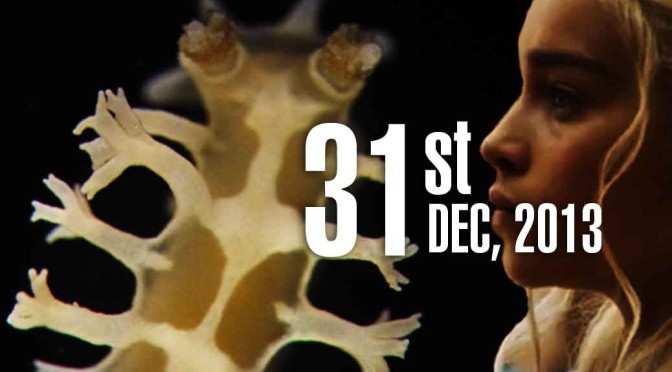By Anupum Pant
We have seen a Game of Thrones themed slug in the past. But today, we look at something that will completely blow your mind off. After giving this little article a read, you’ll be confused and wouldn’t know what to call this slug – a plant, or an animal.
Background
A just born Elysia chlorotica – a kind of sea slug – feeds on algae for the first few days of its life. When it eats algae, what it really does is, stores the chloroplast in its gut. By this way, it able to manufacture its own food later on. Just after those few days from birth, it can completely give up eating, and can survive on just solar energy, by using the stolen chloroplast – just like a plant does.
How is it a true hybrid?
Of course there are animals that eat plants, store chloroplast and use the solar energy in some way. But there is something in E. Chlorotica that sets it apart from animals like that.
E. Chlorotica is a true hybrid animal. Scientists have found that when it eats the algae, by some unknown process, it able to steal the genes from algae and can incorporate it in its own DNA. This gives it an ability to maintain the chloroplast cells by supplying them with the right proteins, and perform real photosynthesis in its own body. Without the gene theft, it wouldn’t have been possible for E. Chlorotica to live off solar energy for the whole life-time (around 1 year).
Photosynthesis in Humans?
The animal has baffled scientists. Before this, they hadn’t known that it was possible for DNA to jump from one kind of a specie to a completely different specie and impart a life-altering function.
No doubt, this opens up a whole lot of possibilities, but scientists say, photosynthesis still doesn’t seem to be possible among humans because unlike E. Chlorotica, our guts are designed to digest and completely destroy chloroplast.
[Source]











